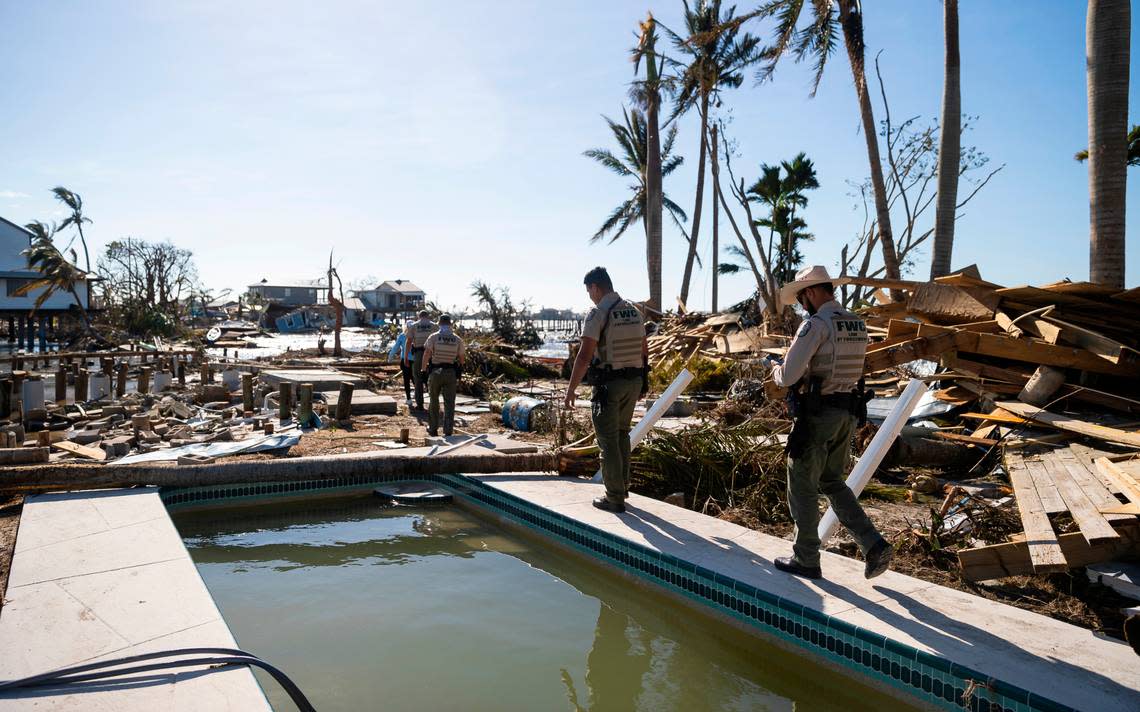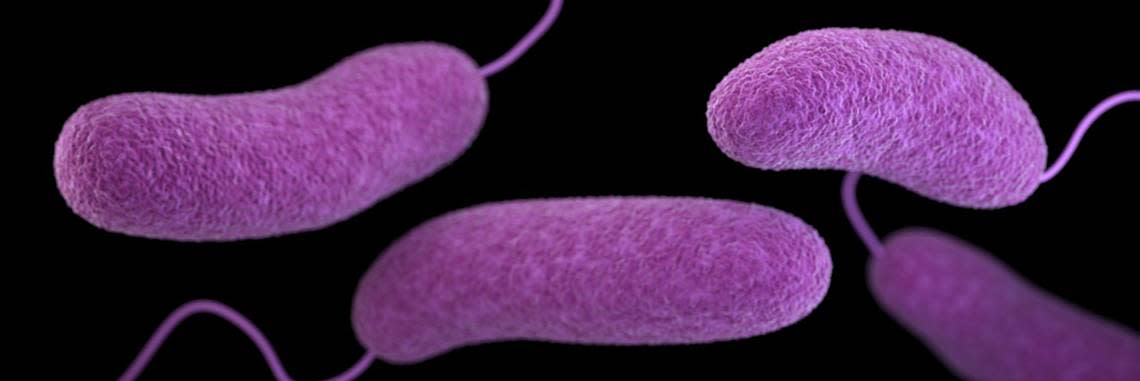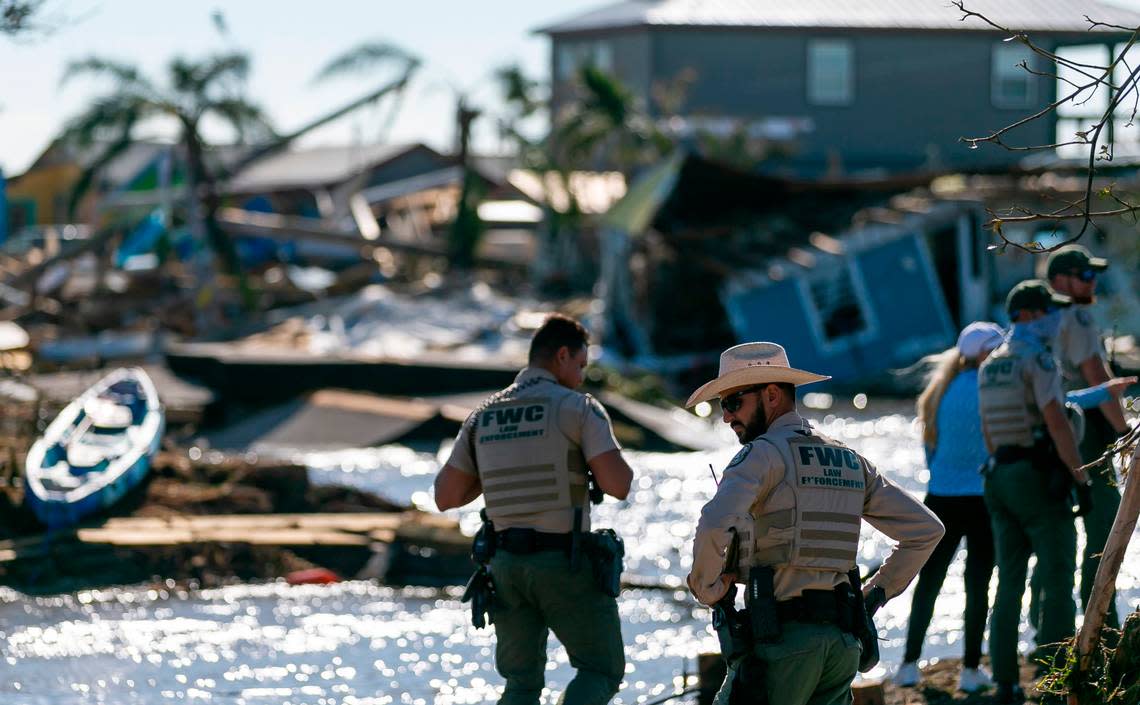What is vibrio ‘flesh-eating’ bacteria — and why is it surging in Florida after Ian?
Florida set a record number of cases of vibrio vulnificus, a bacteria that can live in coastal waters and, in extreme cases, can lead to serious illness and limb amputation.
The Florida Department of Health has tagged 2022’s rise an “abnormal increase due to the impacts of Hurricane Ian.”

Vibrio is often referred to as “flesh eating” bacteria because the infection can lead to skin breakdown and ulcers, according to the state’s health department. But it’s not entirely correct to call it “flesh eating” because vibrio doesn’t break down intact, healthy skin. A person needs to have damaged skin from an open wound, a new tattoo or a scrape for the bacteria to make things worse.
According to the U.S. Centers for Disease Control and Prevention, about one in five people who get the vibriosis infection die — sometimes within a day or two of getting sick.
In 2022, Florida set a record 65 infections of vibrio vulnificus. There have been 11 deaths through Oct. 14, according to the Florida Department of Health.
The 65 infections so far this year topped the record-setting 2017, when Florida saw 50 cases and 11 deaths through that year. The state began tracking the “flesh-eating” vibrio vulnificus in 2008.
The commonality between 2022 and 2017, according to the Fort Myers News-Press?
Hurricanes.
In 2017, Hurricane Irma swelled waterways in South Florida, made landfall at Cudjoe Key in the Florida Keys, and traveled over Marco Island and moved north-northwest across Florida, flooding many parts of the state, according to the National Weather Service.
In 2022, Lee County, and its popular destinations like Sanibel, Captiva and Fort Myers Beach, was hard hit by Hurricane Ian on Sept. 28. The storm made landfall and battered Southwest Florida but brought heavy rains and storm surge to much of the coast. Lee has the most cases and deaths in the state from vibriosis so far.
According to health department figures, Lee County has 29 cases and four deaths.
“Sewage spills in coastal waters, like those caused by Hurricane Ian, may increase bacteria levels,” Lee County department spokeswoman Tammy Soliz said in a statement.
The bacteria can enter the body through open wounds like cuts or scratches exposed to sea or brackish water.
This ‘flesh-eating’ bacteria can cause fever, pain, death — and Florida cases went up
There’s a second reported ‘flesh-eating’ case from Florida. Here’s how to avoid it
How many cases?

▪ After Lee, Escambia County, the westernmost county in the state in the northwest corner has had five cases and one death so far in 2022.
▪ Bay County in Northwest Florida has had three cases and one death.
▪ Collier County and Santa Rosa have had three cases and no deaths.
▪ Citrus County has had two cases and two deaths.
▪ Broward County has had two cases and one death.
▪ Miami-Dade, Brevard and Okaloosa each have had two cases and no deaths.
Numerous counties including Manatee, Charlotte, Duval, Flagler, Highlands and Seminole have had single cases (Highlands and Seminole also had one death apiece.)
“Landlocked Hendry County had none,” the News-Press noted. But Monroe County, where the Florida Keys experienced flooding during Ian, also has had no reports of vibrio vulnificus, according to the state’s health department.
How does one contract vibriosis?
Most people get exposed to the bacteria by consuming raw or undercooked shellfish, like oysters, according to the CDC. That’s because vibrio bacteria live in coastal waters where oysters live.
“Because oysters feed by filtering water, bacteria can concentrate in their tissues. When someone eats raw or undercooked oysters, viruses or bacteria that may be in the oyster can cause illness,” the CDC explained.
But, as health officials also point out, exposure can also come via entry points in the body where contaminated water can seep in to the tissues.
“Flood waters and standing waters following a hurricane pose many risks, including infectious diseases such as vibrio vulnificus,” Lee County’s health department said in a news release on Oct. 3 that urged the public to take precautions, The Associated Press reported.

Who is at risk?
Those with weakened immune systems are most susceptible to more serious infections, which can lead to amputations of affected limbs or can prove fatal. Vibrio bloodstream infections can be fatal about 50% of the time.
Symptoms of vibriosis?
Fever, chills, decreased blood pressure or septic shock and blistering skin lesions are some symptoms of vibrio infections, according to the CDC.
Tips on avoiding the bacteria
Florida’s health department suggests the following to reduce your risk of contracting vibriosis.
▪ Avoid exposure of open wounds or broken skin to warm salt or brackish water.
▪ Don’t eat raw oysters or other raw shellfish, and if you do, wear gloves when handling raw shellfish. “Bad” oysters due to exposure don’t look or smell “funny” or different. Cook shellfish including oysters, clams and mussels thoroughly and avoid cross-contamination of cooked seafood and other foods with raw seafood and juices from raw seafood.
Treatment
In mild cases, treatment may not be necessary, but the CDC suggests drinking plenty of liquids (not alcoholic) to replace fluids lost through diarrhea. But for suspected more serious infections, contact your healthcare provider immediately. Antibiotics may be used. Aggressive infections could require amputation.
Vibrio vulnificus infection is diagnosed by stool, wound, or blood cultures.
